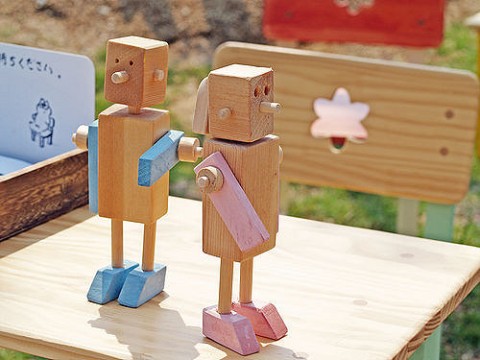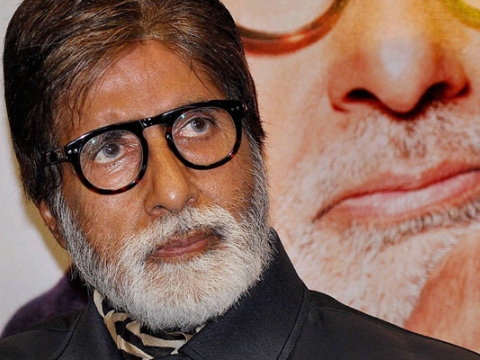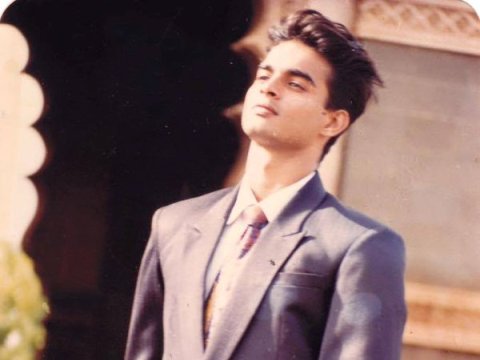I am writing this post some 39,000 feet over Europe, as my transcontinental flight makes its way to Chicago. On an earlier leg, from Chennai to Abu Dhabi, I was pleasantly surprised to discover that one of the in-flight movie options was Vinnai Thaandi Varuvaayaa [Will you cross the skies and come over?]. I had not watched the Tamil movie before, but having been in Chennai around the time of the movie’s release about a year ago, I had caught portions of the catchy soundtrack (by A.R. Rahman) on the air waves.
I had also heard that it was an inter-religious romance with a tragic ending. While such a plotline may have been done to death in Indian cinema, the movie’s director, Gautham Menon had received much praise for his handling of the material. So, naturally, I was intrigued and began to watch the movie.
It didn’t surprise me that, barely minutes into the movie, the male lead broke out abruptly into a song. As we all know, actors do that in our desi movies. (Industry folk may defend the incongruity as driven by the challenges of making films for a diverse populace. “Let’s package romance, comedy, drama, action, music, songs, and dance in one, long movie, so that more people may see it as paisa vasool!”) What induced a definitive cringe, though, was the hero’s expressing love for the heroine in barely their third conversation, each one as fleeting as the other.
Yes, people fall head over heels for someone. That is only human. But that is also called something else: a crush, infatuation, or obsession, and not love. Surely there is some philosopher or poet who has said that to love is to give, not to want.
And the “I love you” declaration was after a previous conversation in which the heroine asked the unemployed hero point blank, at a food court near her workplace, if he had been following her around. That struck a nerve because I could readily recollect several Indian movies in which a romantic relationship blossoms in this sequence:
Boy spots girl, falls for her, follows her around (despite her repeated disapproval), displays chivalry or kindness in some unimaginative, contrived situation, and her feelings towards him change instantly!
Some may argue that such scenes are merely examples of art imitating life. Sure, across many species, males are known to go to great lengths to impress females, all in the hopes of passing their genetic material on to a next generation. (Why, I myself am guilty of having gone overboard, on more than one occasion and despite the risk of embarrassment, in expressing my feelings for a woman.) Yet, it bothers me because I believe that it’s a two-way street, in that life imitates art, too. More so when you are dealing with a medium of mass communication as influential as cinema.
My annoyance with the scenes in VTV probably derives from having seen Indian cinema dish out a lot of tripe over the years, especially when it comes to courtship rituals, gender relationships, and family dynamics. Do we really need impressionable young men thinking that it is acceptable to stalk a woman? That, if you persist, the woman will eventually come around and reciprocate your feelings? Do we need couples and families to think that the way to resolve a problem in their relationships is through theatrics, emotional blackmail, or even the threat of violence, rather than through loving communication? I could cite more examples, including those I have raised in the past to needle a dear actor brother, but you get the idea.
I suppose that if movies were to suggest otherwise, it may make for less-compelling viewing, but here’s why this matters: A recent international study (Barker et al., 2011) painted a sobering picture of Indian men, compared to men in five other countries, in their attitudes on gender equality. To illustrate: 86% of the Indian men surveyed believed that “changing diapers, giving kids a bath, and feeding kids are mother’s responsibility.” 81% of the Indian men surveyed believed that “a man should have the final word about decisions in his home.” See the table below for how men in the other countries responded. (The full report is available at ICRW.org.)
Percent of surveyed men who agreed or partially agreed with GEM scale items, by country.

The study also found that men with higher educational attainment and married men had more equitable attitudes, while unmarried men had the least equitable attitudes, suggesting that “men who are married learn to ‘soften’ or modify their attitudes” as they learn from living with women.
What of the (younger) unmarried men then, especially in a society in which male-female interactions are comparatively limited? When, where, and how do you suppose their gender attitudes are shaped? Could there not be a cause-effect relationship with what they see on screen?
I am not advocating that movies shift objectives from entertainment to social change, although I commend Rajkumar Hirani (director of Lage Raho Munnabhai and 3 Idiots) for finding a way to blend the two. Having more female filmmakers and women of stature in the male-dominated film industry may bring about a welcome balance in perspectives, but I don’t think you can impose balance. I believe in encouraging consumers to voice their opinions and, in turn, letting the markets decide.
For starters, here’s a question for readers of this post: What are your thoughts on courtship rituals and gender relationships as portrayed on screen? Any laudable or cringe-inducing movies or scenes you would like to share with us?
As for VTV, sleep hit me before long, but the movie actually lost me before that, at “I love you”! It may not matter to its producers, as the market has already spoken, and I don’t begrudge the movie for its blockbuster status. I just fear that others may see in the success of its overall package a license to persist with and perpetuate some outdated notions.
Reference:
Barker, G., Contreras, J.M., Heilman, B., Singh, A.K., Verma, R.K., and Nascimento, M., “Evolving Men: Initial Results from the International Men and Gender Equality Survey (Images),” International Center for Research on Women (ICRW), Washington, D.C. and Instituto Promundo, Rio de Janeiro, January 2011.
Image courtesy of jtbrennan via Creative Commons.
Editor’s note:
Wondering if art does indeed imitate life or vice versa? Read If Jodi365 Were A Movie to know the difference between the launch of new website and the release of a new movie.

















































[…] Who is a woman or what does it mean to be one? Scrutinizing the gender roles that dominate the patriarchal society that we live in, the third wave of feminism was a backlash against the initiatives of the second […]
[…] While true love does exist, read about how it is almost always portrayed in Indian movies: How Love Blossoms In Indian Movies. […]
[…] Circumstances lead Geet (Kareena Kapoor) and Aditya (Shahid Kapur), two complete strangers to meet and travel together. Carrying baggages that are poles apart, one who is set to elope with her boyfriend and another who is in disdain considering that the love of his life got married to another man, the movie gently takes us through a rather funny and light-hearted narrative of how both of them finally discover their love for each other. The portrayal of love in Indian movies tend to come under the scrutiny of critics. Read: How Love Blossoms in Indian Movies. […]
[…] Who is a woman or what does it mean to be one? Scrutinizing the gender roles that dominate the patriarchal society that we live in, the third wave of feminism was a backlash against the initiatives of the second […]
[…] Here’s another article you might be interested in: How Love Blossoms In Indian Movies. […]